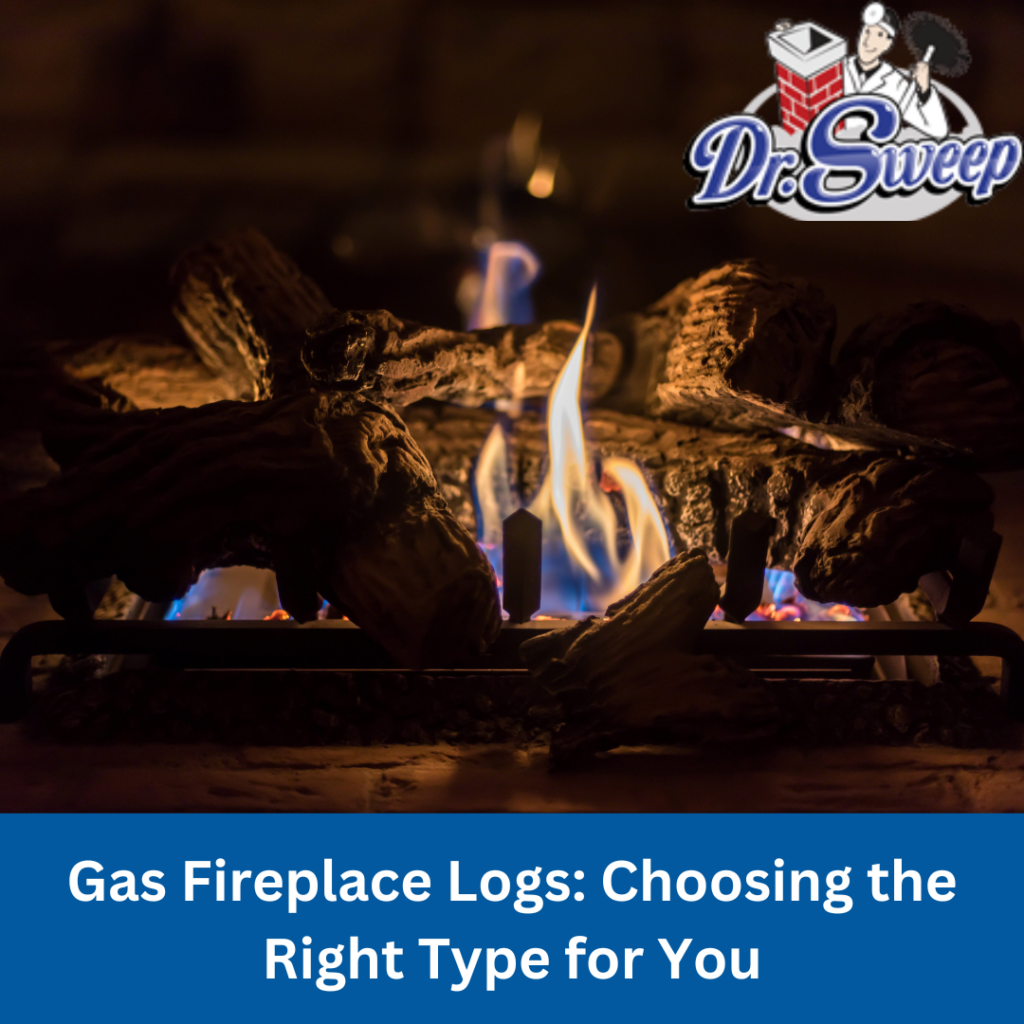
Gas fireplace logs have revolutionized the way we enjoy the warmth and ambiance of a traditional fireplace without the hassle of wood and ash. These innovative products offer numerous benefits, making them a popular choice among homeowners. In this article, we’ll explore the different types of gas fireplace logs, their unique features, and how to choose the best ones for your home.
Introduction to Gas Fireplace Logs
Gas fireplace logs are designed to mimic the look of real wood logs while providing the convenience and efficiency of gas. Unlike traditional wood-burning fireplaces, gas logs offer a cleaner and more manageable alternative, producing consistent heat with the flip of a switch. Whether you have a vented or ventless gas fireplace, understanding the different types of gas logs can help you make an informed decision.
Types of Gas Fireplace Logs
There are two main types of gas fireplace logs: vented and ventless. Each type has its own set of characteristics, benefits, and installation requirements.
Vented Gas Fireplace Logs
Vented gas fireplace logs are designed to be used in a fireplace with a working chimney or flue. These logs provide a realistic flame pattern and a natural-looking fire. Here are some key features of vented gas logs:
• Realistic Appearance: Vented gas logs are crafted to resemble real wood logs closely. They produce a larger, more lifelike flame that dances and flickers like a traditional fire.
• Heat Output: While vented gas logs generate a beautiful flame, they are not as efficient in heating a room compared to ventless logs. Much of the heat escapes through the chimney.
• Ventilation Requirements: Proper ventilation is crucial for vented gas logs to ensure safe operation. This type requires an open chimney flue to allow combustion gases to escape.
Ventless Gas Fireplace Logs
Ventless gas fireplace logs, also known as vent-free logs, are designed to be used without a chimney or flue. These logs are highly efficient and provide significant heat output. Key features include:
• High Efficiency: Ventless gas logs are designed to burn gas cleanly, making them highly efficient. They produce more heat and keep it inside the room.
• Safety Features: Ventless logs come equipped with oxygen depletion sensors (ODS) that automatically shut off the gas if oxygen levels drop too low.
• Easy Installation: Since they don’t require a chimney or flue, ventless gas logs are easier and less expensive to install. They can be used in various spaces, including homes without existing fireplaces.
Material Choices for Gas Logs
Gas fireplace logs are typically made from one of two materials: ceramic fiber or refractory cement. Both materials have their advantages, and the choice depends on your preferences and needs.
Ceramic Fiber Gas Logs
Ceramic fiber gas logs are lightweight and known for their ability to withstand high temperatures. They often come with a more intricate and detailed design, giving them a realistic appearance. Benefits of ceramic fiber logs include:
• Heat Retention: Ceramic fiber logs retain heat well, providing a more extended period of warmth even after the gas is turned off.
• Realism: These logs can be molded into highly realistic shapes and textures, closely resembling natural wood.
• Durability: Ceramic fiber logs are durable and resistant to cracking, making them a long-lasting option.
Refractory Cement Gas Logs
Refractory cement gas logs are heavier and denser than ceramic fiber logs. They are known for their durability and ability to withstand extreme heat. Benefits include:
Heat Resistance: Refractory cement logs can endure higher temperatures without damage, making them suitable for high-heat applications.
• Longevity: These logs are robust and can last for many years, providing reliable performance.
• Authentic Look: Refractory cement logs are crafted to resemble real wood, with detailed bark patterns and textures.
Benefits of Using Gas Fireplace Logs
Switching to gas fireplace logs offers numerous advantages over traditional wood-burning fireplaces. Some of the key benefits include:
Convenience
Gas fireplace logs eliminate the need for chopping, stacking, and storing firewood. With just the flip of a switch or the push of a button, you can enjoy a cozy fire instantly. Many gas logs are compatible with remote controls and smart home systems, adding to their convenience.
Clean Burning
Unlike wood, gas logs burn cleanly and produce minimal soot and ash. This means less maintenance and no need to clean up messy ashes after each use. Additionally, gas logs do not produce harmful creosote, reducing the risk of chimney fires.
Energy Efficiency
Ventless gas fireplace logs are particularly efficient, converting nearly all the gas they burn into usable heat. This can help lower your heating costs during the winter months. Even vented logs, while less efficient, provide a supplemental heat source that can reduce reliance on central heating.
Aesthetics
Gas fireplace logs are designed to look like real wood, complete with bark patterns, knots, and charred edges. They provide the same warm, inviting ambiance as a wood-burning fire without the drawbacks.
Safety
Gas logs offer several safety features, such as oxygen depletion sensors and automatic shut-off valves. These features help prevent the buildup of dangerous gases and ensure safe operation.
Choosing the Right Gas Fireplace Logs
When selecting gas fireplace logs, consider the following factors to ensure you choose the best option for your home:
Fireplace Type
Determine whether your fireplace is vented or ventless, as this will dictate the type of gas logs you need. Vented logs require a functional chimney, while ventless logs do not.
Size and Style
Gas logs come in various sizes and styles to fit different fireplaces and decor. Measure your fireplace to ensure the logs you choose will fit correctly. Consider the overall look you want to achieve, whether it’s a rustic, traditional, or contemporary aesthetic.
Heat Output
Consider your heating needs when selecting gas logs. If you want to use your fireplace as a primary heat source, ventless logs are the more efficient option. For ambiance with some supplemental heat, vented logs are ideal.
Fuel Type
Gas logs can be fueled by natural gas or propane. Ensure you select logs compatible with your home’s existing gas supply. If you don’t have a gas line, a propane tank can be an alternative.
Warren’s Trusted Chimney Sweep and Masonry Services Provider
Choosing the right gas fireplace logs can enhance the warmth and beauty of your home. Whether you prefer the realistic flames of vented logs or the high efficiency of ventless logs, understanding the different types and materials available will help you make an informed decision.
At Dr Sweep, we are dedicated to helping you find the perfect gas fireplace logs that suit your needs and preferences. As a trusted chimney sweep and masonry services provider in Warren, MI, we have extensive experience in selecting, installing, and maintaining gas logs. Our team of experts is here to guide you through every step of the process, ensuring that your gas fireplace not only looks great but also operates safely and efficiently.
When you choose Dr Sweep, you benefit from our comprehensive knowledge and professional service. We take the time to understand your unique requirements and recommend the best gas logs for your specific setup. Whether you need help with a new installation or require maintenance for your existing gas logs, we are here to assist you.
Don’t settle for anything less than the best for your home. Let us help you transform your fireplace into a stunning centerpiece that provides warmth and comfort throughout the year. Schedule a consultation now and discover how we can enhance your home with the perfect gas fireplace logs.
Dr Sweep
24800 Warner Ave suite 103, Warren, MI 48091
(248) 639-4897

